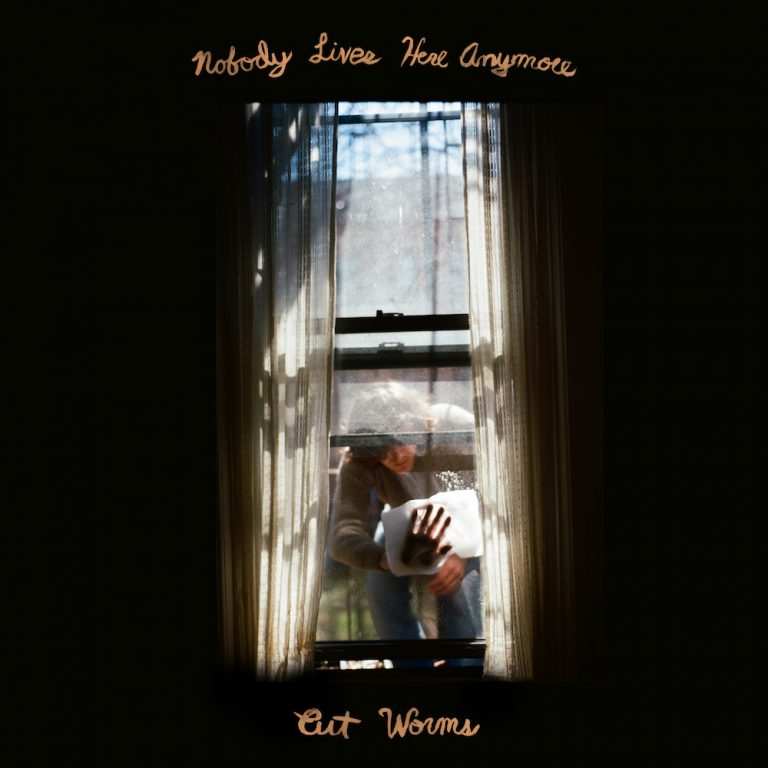In his 1993 essay “E Unibus Pluram: Television and U.S. Fiction”, David Foster Wallace discussed a new style of literary writing that he envisioned emerging, what one might call ‘New Sincerity’: “The new rebels might be artists willing to risk the yawn, the rolled eyes, the cool smile, the nudged ribs, the parody of gifted ironists, the “Oh how banal”. To risk accusations of sentimentality, melodrama. Of overcredulity. Of softness.”
Listening to Max Clarke’s new album as Cut Worms, Nobody Lives Here Anymore, one could consider him as a proponent of this idea in music. Harking back to the 1950s golden age of country and doo-wop, his sound is courageous, it being far more fashionable currently to use the psychedelic pop of the 1960s as a source of inspiration. Going back one further decade, Cut Worms is forthcoming and unashamed of the relative pleasantness of his influences. There is no evidence of simmering irony, no signs of posing.
The other thing that connects Cut Worms to David Foster Wallace, it seems, is a disregard of brevity. This double LP is a monstrous follow-up to 2018’s Hollow Ground, comprising 17 songs that mosey on for 80 minutes.
The songs were recorded in Memphis, Tennessee, at the legendary Sam Phillips Studio with Matt Ross-Spang, who boasts some serious country production credentials (Jason Isbell, Margo Price), and Cut Worms’ sound across Nobody Lives Here Anymore is an amalgamation of the American Best of the 50s and 60s; country twang (“Castle In The Clouds”) aligns with sincere pop melodies (“Sold My Soul”) and cute doo-wop (“A Love So Fine”).
There is a dash of the lonely cowboy Hank Williams in a song like “Looks Like Rain”, but Clarke more regularly embodies the spirit of The Everly Brothers. He even does a remarkable job of covering both Phil and Dan’s vocal styles: on “Last Words To A Refugee”, for instance, his register is mostly low and heartfelt but at points leaps into a sweet and swooning falsetto. On the bright and hearty “Every Once In A While”, he then recalls that other classic mid-century American duo Simon & Garfunkel.
Cut Worms has said that the album is about throwaway consumer culture and how the post-war commercial wet dreams never came true. Such concerns are most evident lyrically on the moving “Veteran’s Day”, written from the perspective of a soldier adjusting to post-war life: “Let off from the army, settle into sweet repose / Keeping everything inside until it explodes,” the narrator says; “You, you don’t know / what this life can do to a fool like me,” he worries later.
While he does fully commit to wistful nostalgia elsewhere, such as on “All The Roads”, recalling days and evenings spent playing in the park (“When my mind wanders off in a sentimental mood / I’ll find my way back again the way I always do”), it never devolves into facetiousness. It would have been easier for Cut Worms to insincerely glorify the old setting of his sonic influences, but this would be the action of a simple tribute act.
Similarly, the lilting sentimentality of “Walk With Me” is too lovely to be labelled saccharine, as it oozes with wonderful harmonies and twinkling keys. The same goes for “Baby Come On”, where the repetition of the title feels genuinely heartfelt. He slips into soft balladry on “The Golden Sky”, the warbling quality of his voice replaced by a warm closeness and tenderness. Honky tonk piano drives the lighthearted “God Bless The Day”, before Cut Worms then ends the record – finally – with the swooning country closer “Cave Of Phantoms”, one last slice of sincerity. “Hold on tight / I’ll meet you in the morning / When the sun will meet the sky,” he cries.
The length of Nobody Lives Here Anymore has to be discussed, of course. Put simply, it’s too long: this criticism applies to both the whole record and the individual songs, for they mostly eschew the sub-three-minute blast of sweetness that characterised the work of The Everly Brothers and their peers. Reportedly, Cut Worms opted this time to use rough drafts of his songs, seeking to capture something more immediate and honest. There are, then, some tracks that skip the imagination, fading from memory as soon as their final chord fades; he doesn’t try for experimentation, he doesn’t pursue outré avenues. Conversely, there are also no true filler pieces, for he possesses too good an ear for melody to allow this to happen.
An interesting thought experiment is to guess which tracks would be included in a concise single LP format. Perhaps Cut Worms would be stuck by this question himself. As it stands, Nobody Lives Here Anymore is a respectable and melodious work of sincere and warm country-pop. One wonders, though, if the sonic nostalgia will be able to stretch to a third record; at the very least, it can’t be the length of a feature film again.

